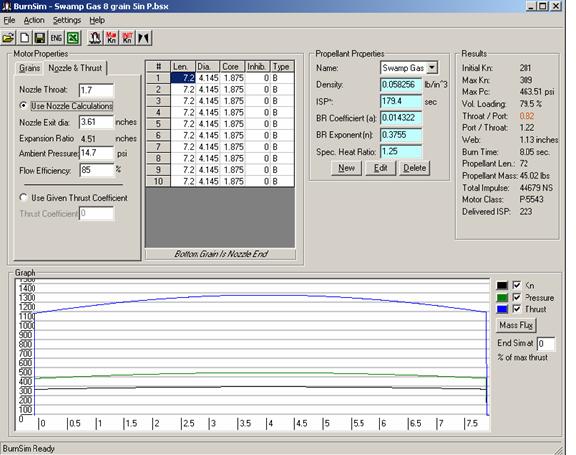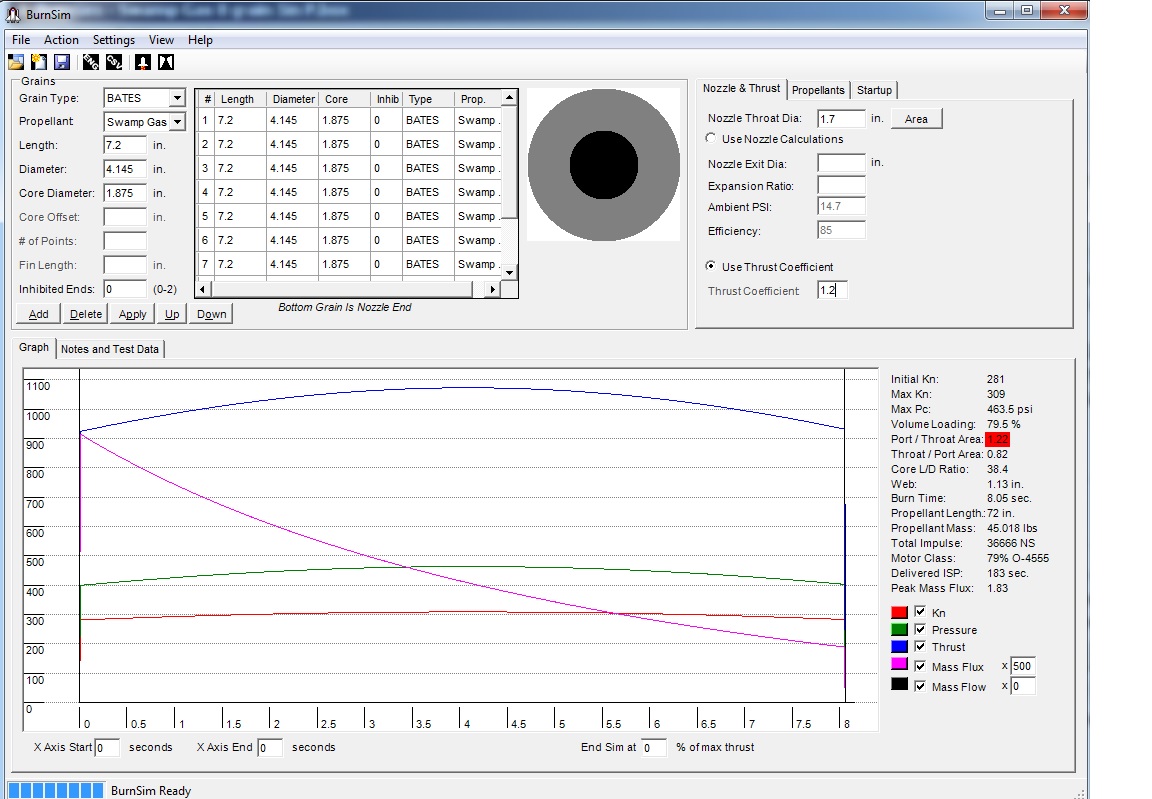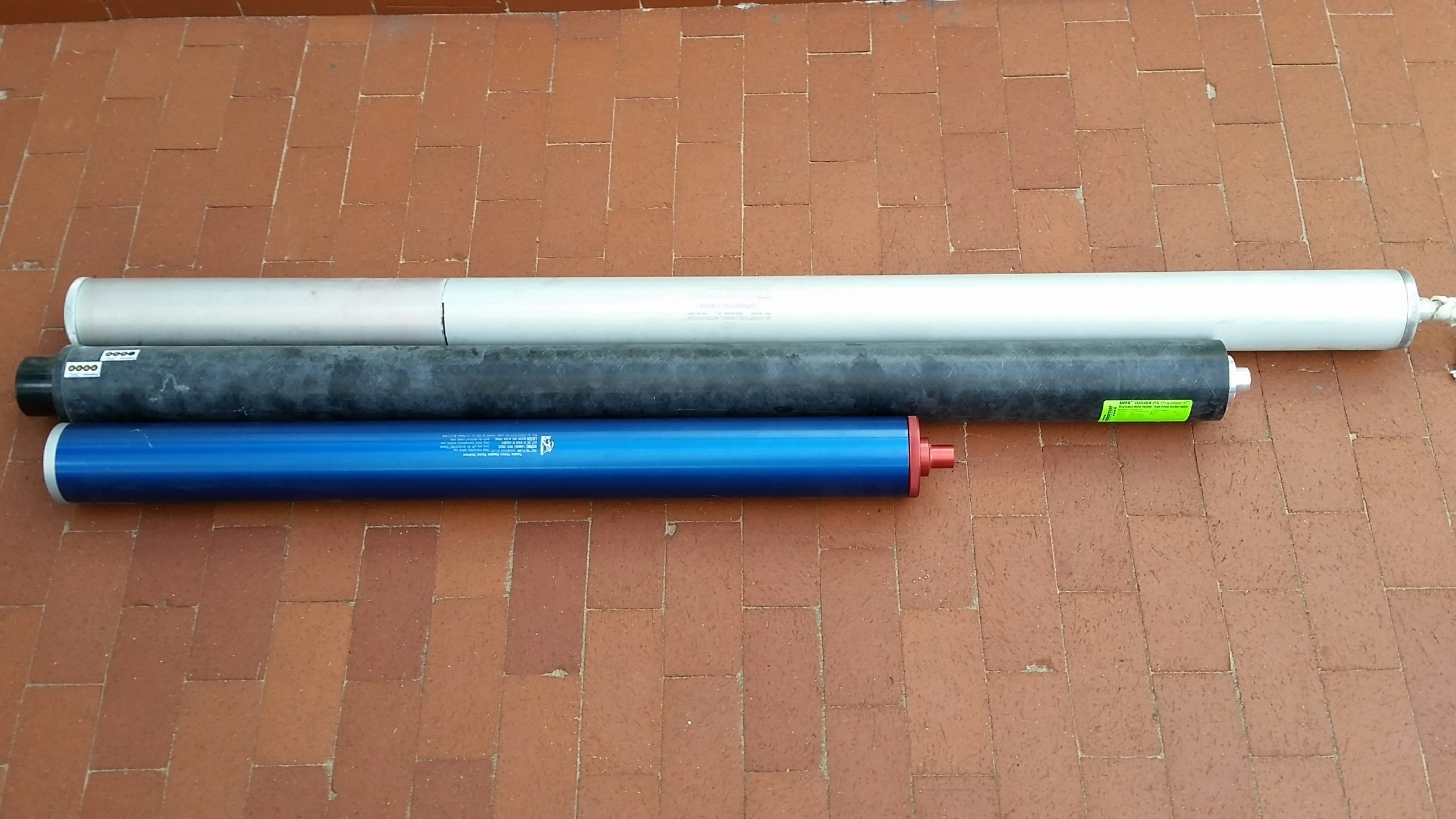Hi everyone,
It's been a long time since I have posted on here, but I thought I might share with you my high school club's progress on our minimum diameter boosted dart concept.
Last Saturday, after a whirlwind of last minute machining (finished tapping the retaining bolt holes at 3 the night before), we got out to the MTA (the RRS' Mojave Test Area) to burn our last 4 grains, finishing the characterization process for our fuel composition. These tests went extremely well especially considering the nozzle we used was a modified USC nozzle which I picked up from their rocket lab the night before.
Before our tests, we got the chance to watch a group of middle-schoolers from downtown launch 13 (far too many) zinc-sulphur Alpha rockets to 5-7,000' each. After our first test, UCLA tested their bi-prop kerosene NO motor which made 650 lbf nominal thrust for 15 seconds!
Here are the videos of our two tests and their pressure+thrust data: https://youtu.be/jZHtt2CPc9g
Here is a link to UCLA's powerful liquid motor test (most recent post): https://www.facebook.com/rocketproj...oAdsUySO7UiaHrf6ac2A_BWXCTDqzyTupnjPw&fref=nf
As it says in the video, from here, we will be designing and testing a 5" 10,000 lbf-s motor to launch our boosted dart rocket to over 150,000' in the coming months!
-Jack
It's been a long time since I have posted on here, but I thought I might share with you my high school club's progress on our minimum diameter boosted dart concept.
Last Saturday, after a whirlwind of last minute machining (finished tapping the retaining bolt holes at 3 the night before), we got out to the MTA (the RRS' Mojave Test Area) to burn our last 4 grains, finishing the characterization process for our fuel composition. These tests went extremely well especially considering the nozzle we used was a modified USC nozzle which I picked up from their rocket lab the night before.
Before our tests, we got the chance to watch a group of middle-schoolers from downtown launch 13 (far too many) zinc-sulphur Alpha rockets to 5-7,000' each. After our first test, UCLA tested their bi-prop kerosene NO motor which made 650 lbf nominal thrust for 15 seconds!
Here are the videos of our two tests and their pressure+thrust data: https://youtu.be/jZHtt2CPc9g
Here is a link to UCLA's powerful liquid motor test (most recent post): https://www.facebook.com/rocketproj...oAdsUySO7UiaHrf6ac2A_BWXCTDqzyTupnjPw&fref=nf
As it says in the video, from here, we will be designing and testing a 5" 10,000 lbf-s motor to launch our boosted dart rocket to over 150,000' in the coming months!
-Jack







